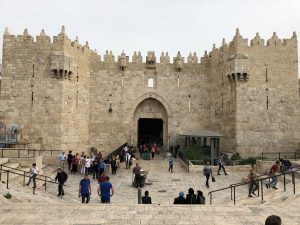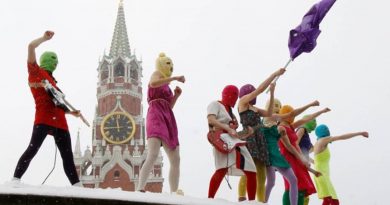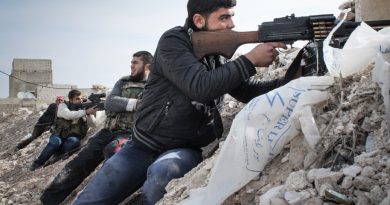Summer Spotlight: A Visit to Palestine
Mohamed Shedeed
Staff Writer
Imagine a border with some of the most intense security in the world. A discriminated ethnic minority sits in detention for hours waiting for the next round of questioning as part of a “vetting” process. Mothers hold crying children in their arms as border agents question them in broken accents. White Americans have no problem getting through.
Rather than a description of the situation at the U.S. – Mexico border, this is a description of the King Hussein Bridge, the Israeli-controlled crossing from Jordan into the West Bank.
For the past six months, I have been studying and interning in Amman, Jordan. In a country of roughly 9.5 million, an estimated 2.1 – 3.5 million are Palestinian, according to Minority Rights Group International.
Why are there so many Palestinians in Jordan?
In 1948, the creation of Israel followed and led to the forced internal and external displacement of millions of Palestinians, the destruction of 601 Palestinian villages, according to Zochrot, an Israeli NGO, and the Jordanian annexation of the West Bank.
Many of the Palestinians displaced by the creation of Israel and the influx of settlers sought refuge in the surrounding areas of Gaza, the West Bank, Jordan, Syria, and Lebanon. Palestinians now use the term Nakba – an Arabic word meaning “catastrophe” – to describe this event.
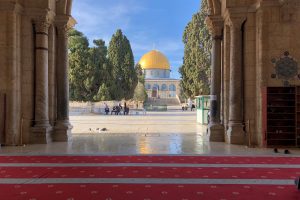 In early May, I visited Palestine with two friends who were in my study abroad program. All three of us were born in the United States. All three of us were traveling using American passports. Nevertheless, we each had a unique experience. I am of Egyptian descent. My friend Samir’s family is part of the Palestinian diaspora. My other friend, Diana, is of Russian and Jewish descent.
In early May, I visited Palestine with two friends who were in my study abroad program. All three of us were born in the United States. All three of us were traveling using American passports. Nevertheless, we each had a unique experience. I am of Egyptian descent. My friend Samir’s family is part of the Palestinian diaspora. My other friend, Diana, is of Russian and Jewish descent.
We all went to the King Hussein Bridge in the same taxi. We all paid the same exit fee from Jordan. We all bought the same bus tickets to cross the border. Our differences started to show once we got to the first security checkpoint.
We gave the woman at the window our passports and went through the metal detector. Diana got her passport back. Samir and I did not. The woman told us they were going to perform a security check.
After about fifteen minutes, a man called our names. He told us to take everything out of our pockets, checked the contents, and checked our backpacks for explosive residue.
We proceeded to the next window. The border agent took all of our passports but was only interested in two. She asked Samir and me questions about our origins, where we lived in the U.S., what we were doing in Jordan, why we wanted to go to Israel, where we were staying, how long we were going to be there for, and so on. She asked Diana where she was going and how long she would be there.
After questioning Diana, the agent kept Samir’s and my passports. She gave Diana back her passport with a visa inside. Then she gave Samir and me forms to fill out with our personal information. Samir and I sat down in the waiting area once again.
When I heard someone call my name, I expected the same treatment I had received at the border back in March, when I was called for two extra rounds of questioning. The first had been rather casual and in an open space. The second was much longer and took place in a dimly lit office across the desk from an Israeli border agent.
After they issued me a visa, I still had to go through another window. When I answered that woman’s question as to whether I was Palestinian with a “no,” all she said was, “Then why are you here?” I wondered if she asked that same question to everyone else.
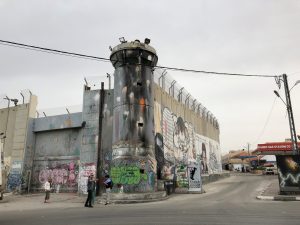 I assume this was because they already had a relatively recent file on me, but the woman who called my name handed me my passport back and, to my surprise, an Israeli visa. Samir, however, was not so lucky.
I assume this was because they already had a relatively recent file on me, but the woman who called my name handed me my passport back and, to my surprise, an Israeli visa. Samir, however, was not so lucky.
The border agents took Samir for questioning three separate times. The fourth time they called his name, they handed him his passport and the small blue visa.
Our story was not unique. Other students in our program of Middle Eastern and South Asian origin claimed to have experienced similar profiling, while the border agents issued visas to white students crossing the border for Easter or concerts within minutes.
We entered Jerusalem that night. The city is beautiful. The centuries-old architecture, the massive walls to the old city rebuilt by various empires, and the general essence of the city are hard to describe with words. However, the air of occupation casts its shadow over everything.
Israel annexed East Jerusalem in 1980, thirteen years after they took West Bank from Jordan in 1967. However, the international community never recognized that annexation as legitimate. Under the Fourth Geneva Convention, the transfer of an occupying force’s population into land it captured during war is illegal, making the annexation of Jerusalem, and the settlements built in the West Bank, illegal.
After a roughly forty minute bus ride to Bethlehem, we arrived at the Separation Wall, which the United Nations Security Council and International Court of Justice have both criticized.
Israel constructed the 26-foot tall wall under the guise of security in 2000; for comparison; the Berlin Wall was 11 feet tall. The wall, a physical reminder of the occupation, shows how Palestinians have lived in an open-air prison for decades now. The large guard towers, the lengthy process to get in or out of Bethlehem, and the stories written and drawn on the wall show this.
Although the West Bank is home to various beautiful structures of historic and religious importance – all of which are astonishing to see – the Israeli Separation Wall was by far the most breathtaking.
According to a UN report, the wall effectively annexed 9.5 percent of the West Bank. The construction of the wall also directly led to the destruction of numerous Palestinian shops, homes, and communities. It also obstructs Palestinians living on one side of the wall from accessing roads, communities, and their families on the other side.
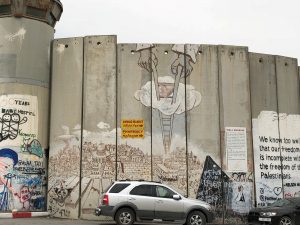
Oppressive governance extends all the way to Gaza. Even if we ignore the ruthless bombing campaign that the Israelis engaged in during the summer of 2014 that killed over 1,000 civilians, the most recent violence is telling of the disregard that the state of Israel has towards the lives of Palestinians. The numbers that matter here are not the kites that killed no one inside of Israel’s official borders, but the 112 people the Israeli military killed and the thousands of people who the Israeli military injured, according to The New York Times and the BBC, respectively.
Responding to Israeli claims of security concerns, Human Rights Watch reported that, “while some protesters near the border fence burned tires and threw rocks, Human Rights Watch could findno evidence of … any IDF claim of threatened firearm use at the demonstrations.”
Israel does have security concerns from groups like Hamas. However, claiming that those concerns not only justify these types of actions but also are more legitimate than the security concerns Palestinians face is absurd and dehumanizing. Palestinians have witnessed the destruction of their homes and villages, air raid campaigns that kill thousands and cripple infrastructure, and even the burning of infants by extremist settlers in the West Bank, report Al Jazeera, The Independent, Haaretz respectively.
What is currently happening in Palestine – and what has been happening for the last century – is the forced displacement, gratuitous killing, and erasure of a people and their identity from the planet. The recent law that the Knesset passed demoting Arabic from an official language and claiming that, “the realization of the right to national self-determination in Israel is unique to the Jewish people,” as reported by Haaretz, an Israeli newspaper is a perfect example of this point.
The law also claims that “the state sees the development of Jewish settlement as a national value and will act to encourage and promote its establishment and consolidation.”
Israel claims that the Palestinians deny Israel’s right to exist, even though Palestinian leaders, as the Jerusalem Post has reported, have repeatedly affirmed that very right.
It is the Israeli government, with its construction of illegal settlements and its attempts to destroy a national identity, that denies the Palestinian right to exist. Denying that Israel is an occupying force is denying a brutal reality.


